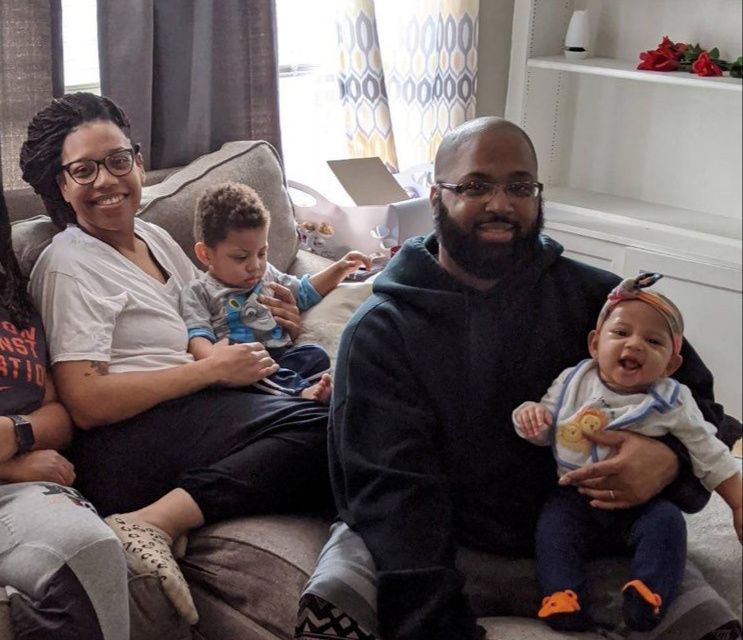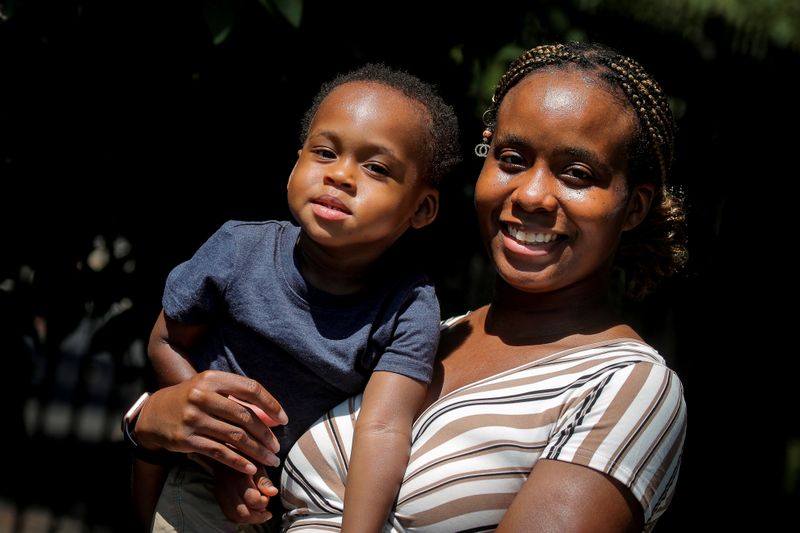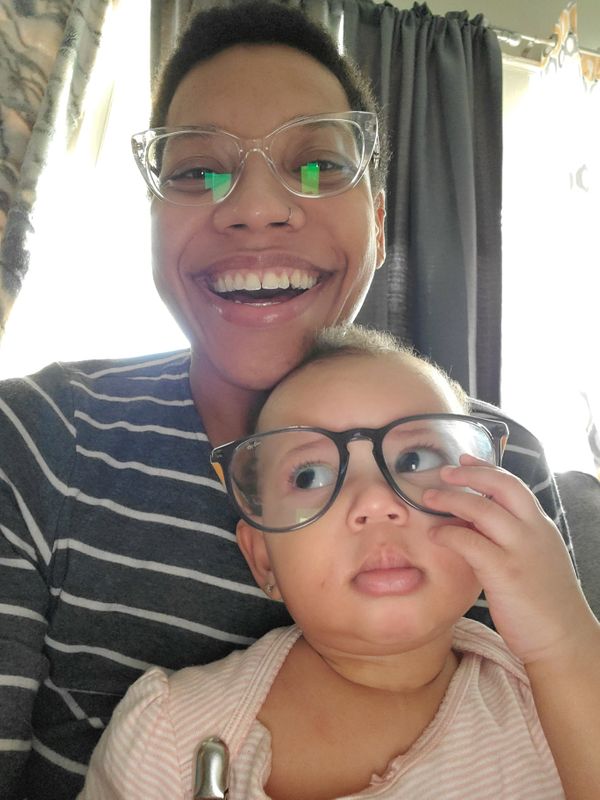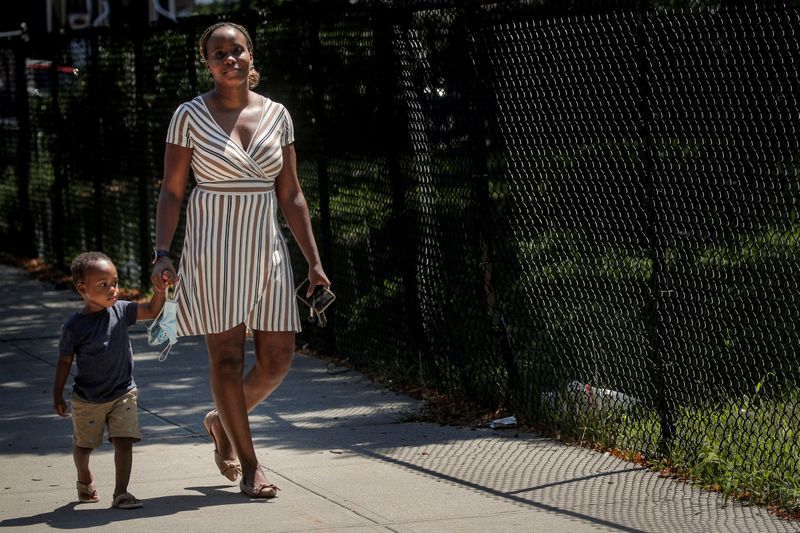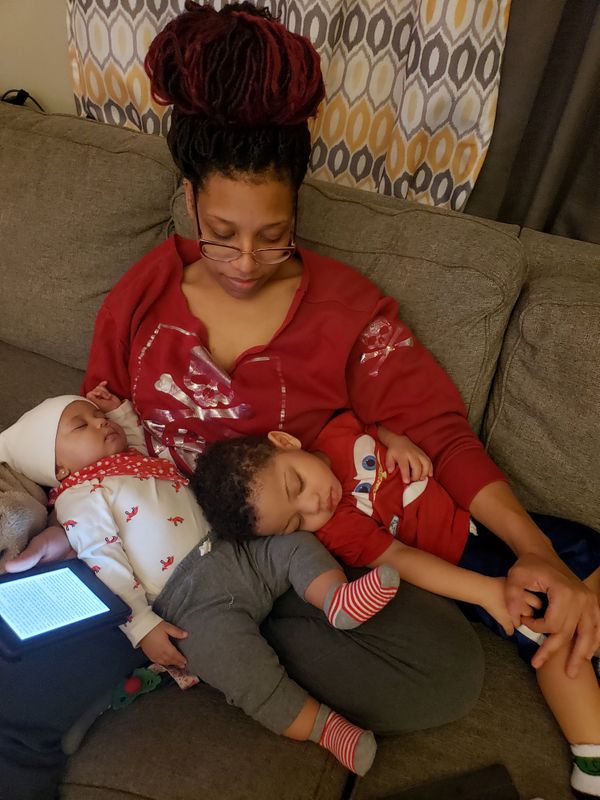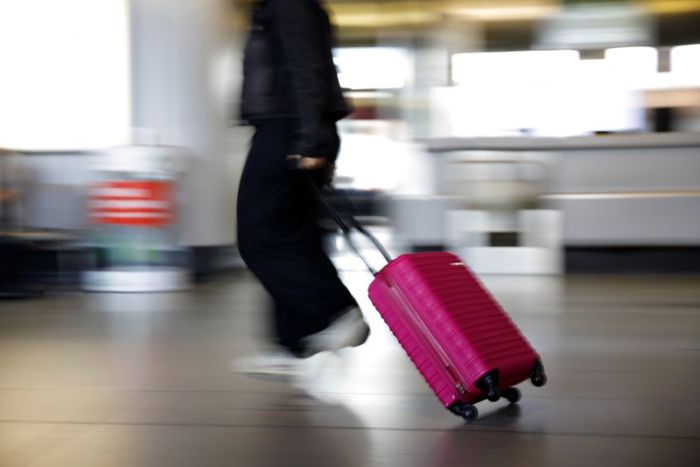CLEVELAND (Reuters) – Most days, Zora Pannell works from her dining room table, sitting in front of her computer, turning off the video on Zoom calls to nurse her one-year-old daughter, Savannah.
Pannell has balanced working from home and caring for her daughter and son Timothy, aged 2, since March when she started a new job as a manager for a language services company the same week that Ohio issued a “stay at home” order to stop the spread of the coronavirus.
Working from home is an exhausting daily juggle but she’s more worried about being told it’s time to return to the office. Her husband cannot watch the children during the day because he has a job at a local steel mill and the couple have been unable to find a daycare center they deemed safe and affordable close to their Shaker Heights apartment on the eastern fringe of Cleveland.
“I’ve already felt penalized for being a working mother,” said Pannell, 30, who is worried she would have to quit if she is not allowed to keep working from home. “Now it’s like I’m in purgatory.”
The pandemic upended child care plans for many parents in the United States, forcing them – particularly mothers – to grapple with tough choices that are only becoming more difficult as states push return-to-work policies to try to revive the battered economy.
Do they hunt for expensive and hard-to-find child care that could expose their families to COVID-19, which is still raging across much of the country? Or do they scale back on work, or even quit, threatening their financial stability?
The barriers risk stalling or reversing the economic gains of recent years made by working women, who are more likely to take a career hit than men when they are unable to find child care, studies show.
A survey https://econofact.org/the-importance-of-childcare-in-reopening-the-economy by Northeastern University between May 10-June 22 found that 13% of working parents had to resign or reduce their work hours because of a lack of child care during the health crisis, with women impacted significantly more than men. In all, of those who said they had lost a job due to child care problems, 60% were women, the survey found.
“If women don’t have child care, they can’t go back to work,” said Karen Schulman, Child Care and Early Learning Research Director for the National Women’s Law Center. If that doesn’t happen, “you end up creating a system that is going to result in vast gender inequities”.
Prior to the pandemic, the labor force participation rate for women aged 25-54 touched 77% in February, rising from 73% in September 2015 and close to the peak reached in 2000, when the share of women in the labor force began to plateau, in part because of challenges accessing affordable child care, experts say.
LIMITED OPTIONS
Pressure looks certain to mount on families in the coming weeks, as various aid programs and protections that offered relief to jobless parents expire, including enhanced unemployment benefits, eviction moratoriums and a freeze on student loan payments.
“There’s this fragile, invisible thread holding the lives of our moms, holding the lives of our economy together,” said Chastity Lord, president and chief executive of the Jeremiah Program, a Minneapolis-based nonprofit organization that supports single mothers and their children.
Finding a way to broaden access to child care will be pivotal to helping the U.S. labor market heal from the economic devastation caused by the pandemic, with latest data showing the economy contracting an annualized 32.9% in the second quarter of 2020 and approximately one out of five workers claiming unemployment insurance in the week ending July 11.
Child care was already scarce before the coronavirus led to the shuttering of thousands of centers. More than half of all Americans lived in a child care “desert” as of 2018, defined by the Center for American Progress, a liberal nonprofit group in Washington, as an area with no licensed child care providers or less than one slot for every three children under five.
Now, in many states, care centers accept only limited numbers of children to prevent the virus from spreading. Additionally, families that relied on grandparents or other older relatives or neighbors must weigh up the risks of asking for their help again and perhaps exposing them to a disease that has proved especially deadly for the elderly.
Chantel Springer, 24, worked at Starbucks in Manhattan during the early months of the pandemic but has been on furlough since June, when the store cut back on staff to adjust to lower demand and social distancing requirements. Now that her unemployment benefits could shrink as low as $325 a week, Springer is making arrangements to get back to her job as a shift manager.
“I feel like I have to work,” said Springer, explaining that the reduced benefits would not be enough to cover the rent, food, diapers and other costs.
This month, Springer transferred to a store in Brooklyn so she could be closer to her apartment and her two-year-old. But finding someone to babysit her son is a challenge. Springer can no longer leave the toddler with her mother, who recently moved to take care of a disabled sister whose husband died from Covid-19. For now, she is looking to coordinate schedules with her son’s father, who has also returned to work at a retail store.
HOME ALONE
Under the CARES Act passed in late March, parents who lost access to child care because of the pandemic became eligible for unemployment benefits. But the process of qualifying for the program, which varies from state to state, became less clear cut as the school year ended and some day care centers began to re-open with limited capacity.
The Labor Department sought to clarify with guidance that parents should resort to their typical summer child care plans.
Many states, including New York, Missouri and Louisiana, allow parents to self-certify each week, under penalty of perjury, that their child care center was closed and that they met the requirements to continue receiving benefits. Other states, like California and Texas, make such decisions on a “case-by-case” basis.
While child care places are hard to find for toddlers, they are even scarcer for school-age children and many summer programs for this age-group went online, leaving parents facing a quandary.
Sarah Sapp is hatching plans to rig up an old cell phone for her 11-year-old son, Avery.
The 37-year-old waitress from North Olmsted, a western suburb of Cleveland, fears her son, who sometimes struggles to pay attention to instructions, isn’t quite mature enough to be left home alone while she serves food and drinks at a high-end tavern. But she feels she has little choice.
When Ohio initially ordered restaurants and bars to close in March, Sapp qualified for state unemployment. But when the state told people it was safe to return to work in May, she was informed that she would no longer be eligible. Sapp tried to sign her son up for a day camp at her local recreation center but it got canceled.
More problems are piling up on the horizon. Sapp’s school district has told parents they must choose between all online lessons or a hybrid of two days shortened days in school and three days at home when classes resume in September. Neither of these options would allow her to work her lunchtime shift.
“I feel stuck,” Sapp said. “There doesn’t seem to be a right choice no matter how I look at things.”
(Rachel Dissell is a contributing reporter with The Fuller Project, a global nonprofit newsroom reporting on issues that impact women.; Jonnelle Marte reported for this story from New York; Editing by Heather Timmons and Crispian Balmer)

